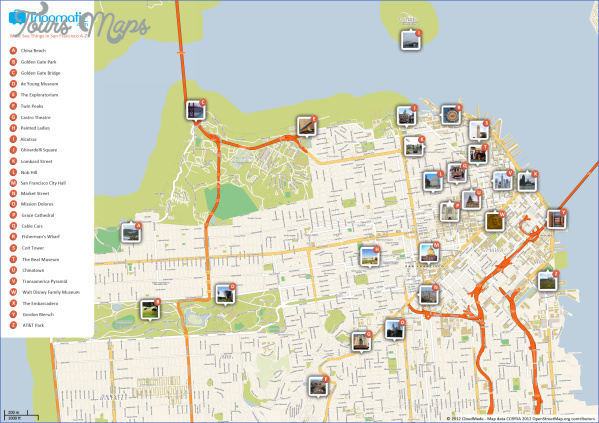Alcatraz is a small island, but you’re bound to get plenty of exercise wandering around the old cellhouse, ruins and gardens. In 1850, just two years after California became a state, the U.S. military installed cannons on Alcatraz, making it the first permanent military outpost on the Pacific Coast. No shots were ever fired and by about 1900 other defenses at the Golden Gate had made Alcatraz obsolete. The Rock’s history as a prison began in 1895 when 19 Hopi people were imprisoned here. Although Spanish-American War captives, military miscreants, and overflow city jail prisoners during the 1906 earthquake also did time on the little island, Alcatraz was not made a Federal penitentiary until 1933. It was a Federal pen until 1962, boasting no escapes among 14 attempts although Frank Morris and the Anglin brothers went over the wall in June of 1962 and were never heard from again. From 1969 to 1971, about 100 Native Americans occupied the island and proclaimed it as Native Land.
ALCATRAZ MAP SAN FRANCISCO Photo Gallery
Alcatraz is not without its greenery. Dirt was hauled from Angel Island when the gun fortifications were installed in the 1800s, and this soil later became the basis for the gardens of military and prison personnel. The cellhouse sitting atop the center of the island is a popular attraction. Also a favorite is the Agave Trail along the seawall on the island’s west shore, leading to stairs up to your own private “lock-up.” One of the island’s best features is its tremendous view of the San Francisco skyline and the Golden Gate Bridge.
What’s Best: Captivating natural beauty, historic sites, and an array of tourist amusements combine for an only-in-San Francisco walk to remember.
Parking: From the Golden Gate Bridge, stay on Hwy. 101 and keep left. You’ll blend with Marina Blvd. Go about 1 ml. and park on left at Fort Mason at Buchanan St. and Marina Blvd. Some parking is by permit only on weekends and holidays. Other parking available on top of the hill, by the youth hostel. Transportation: Blue & Gold Ferry service direct to Fishermans Wharf. Trolley and bus service from downtown Ferry Building. Agency: Golden Gate National Recreation Area; City of San Francisco
On a walk from Fort Mason to Pier 39, you’ll encounter centuries-old military sites, Aquatic Park, Ghiradelli Square, Hyde Street Pier, Fishermans Wharf and a host of other sites that inspire gigabites of digital downloading. Begin by taking a paved path up through Fort Mason’s Great Meadow from the corner of Laguna and Bay streets. Head toward the obelisk statue near the top by Benny Bufano and take the stairs. Check out the community gardens on your right then veer left behind the Fort Barry Youth Hostel. Walk through Black Point Battery, set in a cypress grove with great bay views. Up the stairs to your right will be the site of Battery San Jose, built by the Spaniards in 1797, the oldest of the Golden Gate’s many gun emplacements.
Take the railed stairs from Black Point Battery, leading down to the northern terminus of Van Ness Avenue at Aquatic Park. The park is a man-made cove for fishermen, swimmers, and rowing clubs. If you wish, take a side-trip out the Municipal Pier where you can almost touch the passing sailboats or see what the locals are catching. Then continue around the inner crescent of Aquatic Park, with its beach and tiered steps, below the Maritime Museum and National Historic Park. The Maritime Museum, offering free admission, displays excellent exhibits of San Francisco’s seagoing history and is good place to spend a rainy day. The large complex of red brick buildings behind the museum on Beach Street is Ghiradelli Square, enticing visitors with its chocolate factory, trendy shops and restaurants. Stop in for their famous hot fudge sundae.
Leave Aquatic Park at the corner of Hyde and Jefferson streets. Immediately left is the Hyde Street Pier, a National Historic Park that moors more than a half-dozen vessels, most open to visitors. The ships date from the late 1800s to World War II square-rigged Cape Horn sail boats, steam schooners, paddle tugs and side wheel ferries. Among them is the Balclutha, launched from Scotland in 1886. Traditional seafaring skills are on display. Note: An admission is charged.
Maybe You Like Them Too
- Arnold A Town with a Heart
- Map of New York City – New York City Guide And Statistics
- Map of San Francisco – San Francisco Map Free
- Coolest Countries in the World to Visit
- The 10 Best American National Parks to Visit












